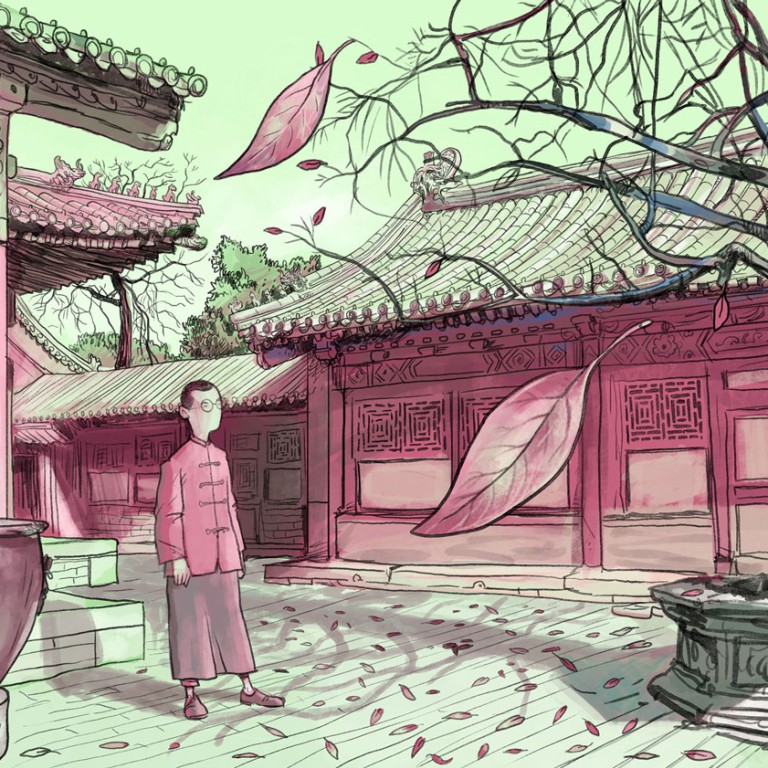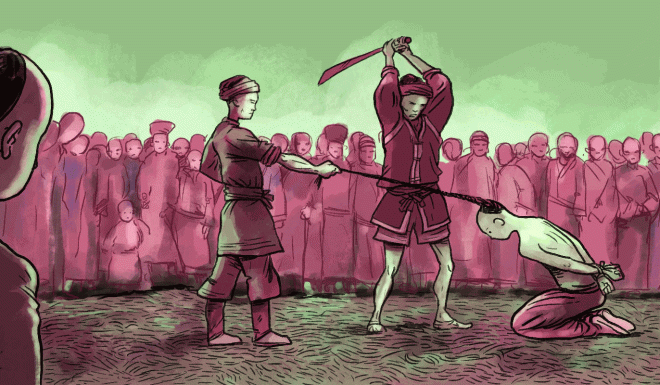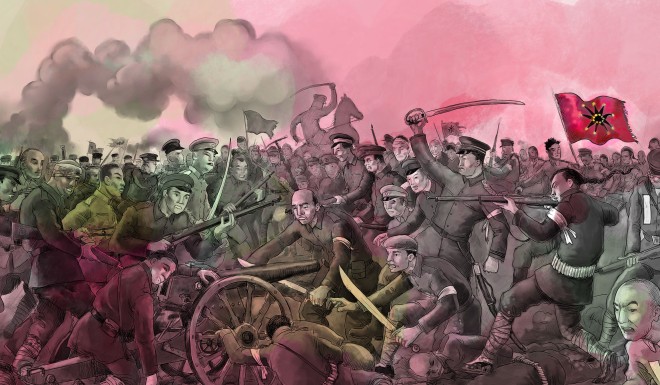
How the death of the Qing Empire, China's last dynasty, gave life to the Palace Museum
China’s powerful dynasties were all but impregnable to outside influence for more than four millennia. But in the 19th century an inward-looking Chinese empire became master of its own destruction when the regime failed to reform and modernise. The imperial system collapsed at the start of the 20th century and the Forbidden City, which had been home to emperors since 1420 and housed the world’s greatest collection of art treasures, was turned over to the public and transformed into the Palace Museum
Legacy
China was ruled for 4,000 years by imperial dynasties. Each successive leader contributed his, or her, unique stamp on the country’s rich and complex cultural heritage. During the last two millennia, emperors strove to outdo their predecessors by amassing more art collections, libraries, relics and treasures. Tragically, these priceless collections were not exempt from the ravages of time and nature, war and looting.
From ancient Bronze Age oracle bones to works of art from the early 20th century, China’s emperors and rulers used art to project their legitimacy, wealth, and power throughout their dominion.
The collections included paintings and calligraphy from the seventh century, along with porcelain from the Yuan and Song dynasties. They also contained silver and gold ornaments, bamboo craft pieces, wood, ivory, gold and bronze religious statues, rich textiles, furniture, architecture, books, and documents.

Many of China’s rulers became sponsors, connoisseurs and authorities on art. Some, such as the Emperor Huizong of Song, even contributed their own artistic prowess to disciplines like calligraphy, poetry and painting.
The two final dynasties amassed works of art on an unprecedented scale and invested heavily in the preservation and curation of the imperial collection.
When the Forbidden City was built, China’s emperors surrounded themselves with artisan entourages. They commissioned original works of art as well as sequestered objects they considered of artistic merit from throughout the empire, amassing a superlative hoard over many generations and various bloodlines.
The last imperial dynasty
The Qing dynasty was founded in 1636 by a Manchurian clan named Jurchen Aisin Gioro. They established power in 1644 by capturing the Ming capital in Beijing, but it took them several decades to subjugate the entire Chinese territory.

Rigid rulers ...
The Qing dynasty ruled over the Han ethnic majority with an iron fist. They enacted harsh laws and regulations and isolated themselves from the general population. Han men were forced to adopt the Jurchen hairstyle, which meant shaving the front of the head and braiding the remaining hair into a pigtail, or queue. The queue signified Han submission to the Manchu and helped readily identify anyone refusing to accept Qing dominance. By chance, the queue was also an expedient way to clasp a prisoner facing execution.

... and enthusiastic patrons of art
Once the Manchu rulers established their hegemony over Chinese cultural traditions their next step was to seal their legitimacy as Confucian-style rulers. Servants from the Ming dynasty counselled the new Manchurian leaders on the appreciation and assimilation of Chinese aesthetics and art. Orders to supply the court with luxurious products were discharged to workshops throughout China. It took just 40 years to establish 27 workshops in the Forbidden City.
One of the most important collectors
The apogee for splendour during the Qing dynasty was achieved in the reign of the Qianlong Emperor (1735-1796). As one of history’s most important art collectors, he assembled an incredible library by sponsoring the search for ancient written works and other artefacts. More than 5,000 emissaries were commissioned to locate and collect every book of importance existing in China. These were collected and transcribed into an encyclopaedia called the Siku Quanshu or Complete Library in Four Sections. The encyclopaedia contains an annotated catalogue of 10,680 titles along with a compendium of 3,593 titles. The Qianlong emperor also hoarded more than 15,000 calligraphy works and paintings. A cultured ruler, he inherited a thriving empire which he guided to its most splendid and prosperous era. Qianlong was a more than capable leader at the start of his reign and he expanded his dynastic territory into Central Asia. But in his later years the empire fell into decline through corruption and court wastefulness as civil society began to stagnate.

Xinghai Revolution
The accumulation of chastening defeats spurred strong anti-Qing sentiment among the population. The imperial government tried to carry out reforms but they were seen as insincere and poorly implemented. It was too little, too late, to save the ailing dynasty.
In 1905, Dr. Sun Yat-sen exiled to Japan, founded the "Tongmenghui", a revolutionary Chinese alliance that brought together many anti-imperial organisations and groups. A series of revolts gradually spread throughout the Chinese territory. The authorities were able to quell these uprisings but the Qing dynasty continued to be undermined while the rebels grew ever more popular.

In 1908, Emperor Guangxu and Empress Dowager Cixi died on November 14, and 15, respectively. Guangxu's two-year-old nephew, Puyi, was named his successor, leaving his father Prince Chun the regent of a collapsing empire.

The government of the new republic confined the five-year-old heir, Puyi, his family, and a large retinue of eunuchs, to live under virtual house arrest.
Puyi remains in the Forbidden City
The new government consented to the young, deposed emperor, remaining in the royal palaces. His family, Dowager consorts and a large cohort of eunuchs stayed with him, retaining their former privileges within the confines of the Forbidden City. After signing the abdication it was not immediately clear if the deposed dynasty’s treasures rightfully belonged to Puyi or became the property of the state.
In an agreement between the Qing dynasty and the republican government, the treasures from four summer palaces were transferred to the Forbidden City. By 1914, many state officials began to ruminate on whether the royal treasures should be displayed as a national collection inside the Forbidden City.
Meanwhile in 1919, Puyi was assigned a Scottish diplomat, Reginald Johnston, as tutor and adviser. Johnston lived in the Forbidden City and New Summer Palace with the deposed emperor forming a very close relationship with his pupil.

Smuggling objects
In 1923, Puyi decided to undertake the laborious project of making a complete inventory of the palace collection. When many known pieces could not be located, the young Puyi decided to inspect the Palace of Established Happiness where Emperor Qianlong stored his favourite pieces.
The palace eunuchs, long adept at acts of intrigue and corruption, had been smuggling the treasures out of the Forbidden City and selling them to antiquarians and collectors in Beijing. Alarmed by the prospect of their plunder being discovered, they set fire to the Palace of Established Happiness.

The fire devastated the building. Of the 6,643 items that had been inventoried long ago, only 387 were rescued. Porcelains, bronzes from the first dynasties, Buddhist paintings, innumerable books and priceless objects and treasures were lost forever.
Realising what the eunuchs had done, Puyi expelled them from the Forbidden City, retaining a small number to care for the older consorts. After the expulsion it is noteworthy that many antique stores run by eunuchs sprang up in the Tiananmen neighbourhood.
The government decided to take its own exhaustive inventory of Forbidden City treasures. Alarmed that the government had set its sights on assuming ownership and control of the collection Puyi decided to begin pillaging numerous objects with the help of his brother, Pujie.
Pujie lived outside the City confines but came to study inside the Forbidden City every day so he began to smuggle out objects and paintings when he returned home in the evenings.

Expelled
On November 4, 1924, the republic’s government changed the law and ordered the Forbidden City to become public property under the government, and expelled the Qing family from the palace. The Qing were only allowed to take their personal belongings and the remaining treasures and historical objects were made the property of the government.
The birth of the Palace Museum
On November 6, 1924, the State Council organised a special committee for the disposition of imperial possessions and to take custody of public property. An inventory and exhaustive audit began with the intention of proclaiming the Forbidden City a museum in which to house the imperial collection
Experts were brought in to decide whether an object was public or private property:
Private: Articles of daily use for the Qing family (such as clothing) were to remain with the family.
Public: Objects of historical value were to be deposited in the new museum.
Inventory process
The inventory classified the treasures into categories, ranging from the sacrificial vessels of the early dynasties, paintings and calligraphy, jade objects, religious statues, books and documents.
The final archive was registered in 28 volumes containing 1,170,000 items.
The Palace Museum was inaugurated with much fanfare on October 10, 1925, the Republic of China’s National Day. The Forbidden City ceased to be an emperor’s palace. Today, the public can walk through the interior to see at first hand the priceless objects accumulated, by emperors over several millennia. The opening ceremony was held at the ‘Qianqingmen Gate’, the Gate of Heavenly Purity. It was a huge success with more than 20,000 people attending.

Despite the hopes and aspirations for the Palace Museum increasing political instability once again plunged the future of the Forbidden City into doubt and uncertainty …

